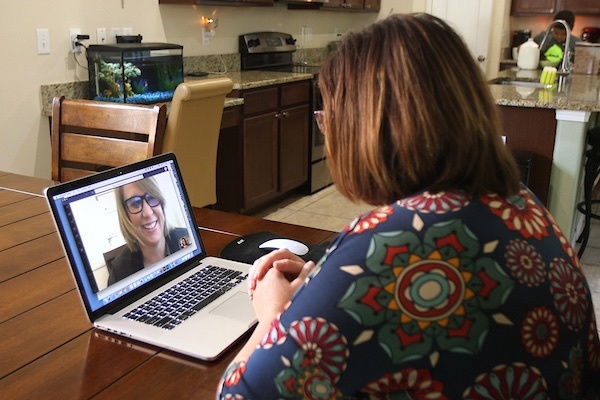The Trump administration has loosened restrictions on insurance coverage for telemedicine so doctors’ offices are able to bill for virtual appointments just as they do for office appointments. But some patient advocates worry that barriers still remain for seniors, one of the populations most vulnerable to COVID-19.
Telemedicine helps avoid possibly risky in-person visits, but access to the technology (including smartphones, Wi-Fi and broadband), the ability to operate the technology, and cognitive or age-related impairment may affect the ability to take advantage of virtual visits.
While 96 percent of American adults use smartphones, almost half of Americans over the age of 65 still don’t have one, and nearly half lack broadband access, according to a Pew Research study conducted last year.
“We’re seeing insurers clearing a lot of the barriers out of the way for this, but that last part, making sure that users are able to use the services, that may be the most time-consuming part of this,” said AARP Florida spokesman David Bruns.
Researchers share concerns about the ease of use of some apps.
“Now would be a time to think about how to create technologies that are universally accessible, regardless of age, regardless of socioeconomic status, racial or ethnic background, and also (to think) about those seniors or individuals where English is not their primary language,” said Uchechi Mitchell, an assistant professor at the University of Illinois at Chicago who focuses on racial and ethnic health disparities and aging.
In Florida, where almost 500,000 seniors had limited English proficiency as of 2018, this is even more of a concern.
Mercedes Carnethon, vice chair of the department of preventive medicine at Northwestern University’s medical school, said that without improvements to apps’ interfaces or access to devices such as iPads that enable video visits, patients may resort to phone appointments, but that means doctors lose the ability to check seniors’ energy levels, skin and eye brightness and mobility, for example.
“When we talk about frailty and looking at muscle function, you know, how many chair stands can you do? Well, suddenly, if you have an iPad, you could set that iPad down and you could watch on video, this older adult stand up and sit down unaided, repeatedly, and you could do some of these functional tests and witness them in real time,” she said. “You can’t do that on the phone.”
Carnethon added that telehealth may help to eliminate race-based disparities in health outcomes for seniors, such as diabetes, high blood pressure and COVID-19, by making it easier for doctors to monitor patients’ symptoms from home.
In practice, however, Florida-based doctors and patients have faced roadblocks to implementing the technology.

Dr. Mark Moseley, chief clinical officer at USF Health in Tampa. [ Courtesy of Dr. Mark Moseley ]
What we learned pretty early on is that we had to call before their appointment,” he said. He said that staff would learn on these calls that some seniors lacked reliable internet access, devices or technical knowledge to set up a video appointment, so follow-up visits would be converted to phone calls.
Ralph Lambert, 82, said his first telemedicine appointment with South Tampa’s Bayside Physicians in April had some kinks to work out. What was supposed to be a 10-minute follow-up appointment turned into a 45-minute one because the doctor couldn’t see him, although Lambert said he was able to see the doctor.
Eventually, Lambert was able to conduct the appointment successfully. He considers himself tech-savvy as a former engineer but knows some of his peers may be less so. “I’m sure it’s difficult for elderly people,” he said of their ability to conduct virtual appointments. “I just had a little flip phone for years and I was perfectly happy with that.” He said his son gifted him an iPhone a few years ago.
Dr. Deborah Boland, a Tampa-based neurologist at Be Mobile Neurology, said her telemedicine system is very smooth for almost all her patients, but her biggest challenge has been coordinating nursing home aides to assist seniors with completing virtual appointments and securing devices to log in.

Monica Stynchula, a member of the Florida Telehealth Advisory Council and founder of ReunionCare. [ Courtesy of Monica Stynchula ]
“Think of all the seniors that don’t have internet in their home,” she said. “We want people to use telehealth, and yet we don’t give them what is essentially the commodity that they need in order to do it.”


